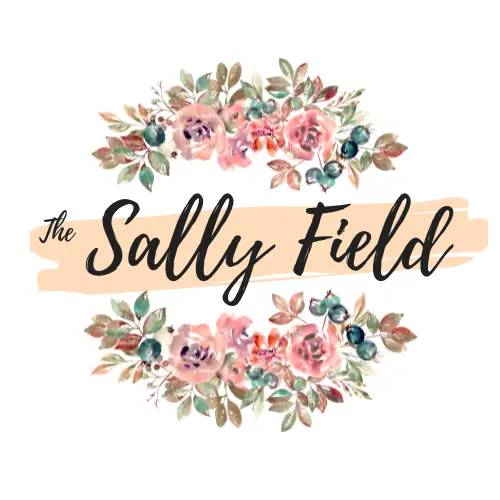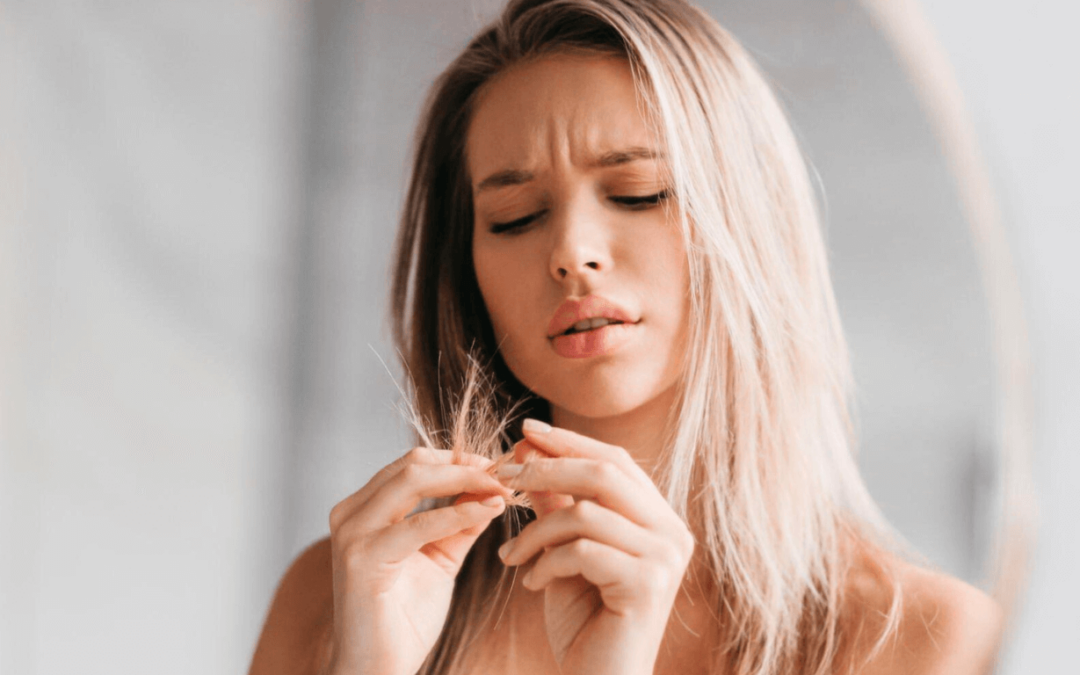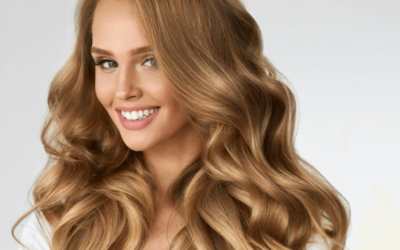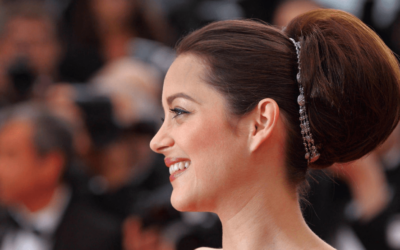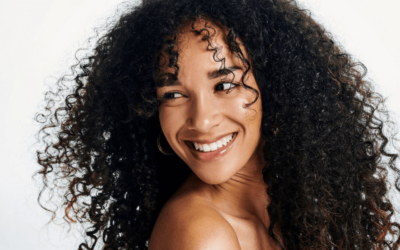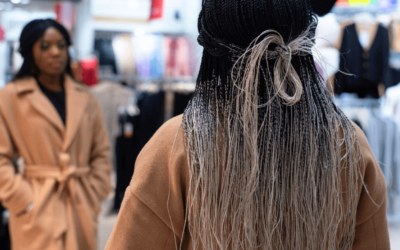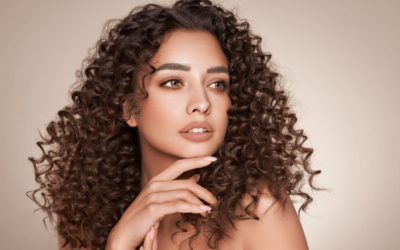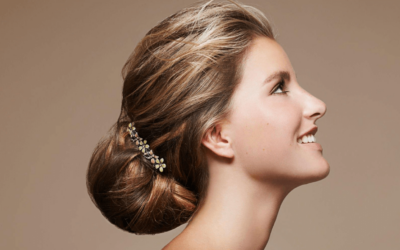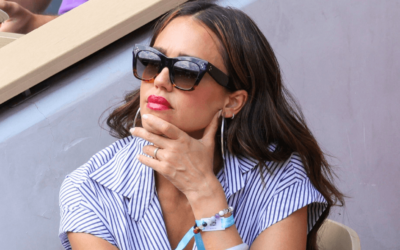Color correcting for hair is a magical solution that can transform your hair from a color catastrophe to a vibrant masterpiece.
In this all-encompassing guide, we’ll take you on a journey through the world of “color correcting for hair,” exploring the ins and outs of this transformative process.
Say goodbye to brassy blondes, uneven tones, and dull brunettes as we equip you with the knowledge and techniques to achieve your dream hair color.
Understanding Color Correcting for Hair
The Art of Hair Color Transformation
Color correcting for hair is a fascinating art that allows hair colorists to work their magic and transform hair shades into stunning new looks.
Whether it’s correcting an unwanted undertone, achieving a seamless ombre effect, or creating a bold vivid hue, color correction can make a dramatic difference in your hair’s appearance.
It involves a combination of science, creativity, and technical expertise to achieve the desired results.
Common Hair Color Issues and Their Causes
Before diving into the color correcting process, it’s essential to understand the most common hair color issues and what causes them.
Brassy blondes, uneven color, overly dark or light results, and faded hues are just a few of the challenges that can occur after coloring your hair.
Understanding the underlying causes, such as improper application, hair history, or exposure to external elements, will help you better address these issues during the color correction process.
How Color Theory Applies to Hair Color Correction
Color theory plays a vital role in hair color correction. The principles of complementary colors and the color wheel guide colorists in selecting the correct color corrector to neutralize undesired tones.
For example, greenish hues in blonde hair can be canceled out by applying a red or warm-toned color corrector. Mastering color theory empowers hair colorists to perform precise and successful color corrections.
Identifying Your Hair Color Undertone
Understanding your hair’s undertone is crucial in determining the correct color correcting strategy. Undertones can be warm (red, orange, yellow), cool (blue, green, violet), or neutral (a mix of warm and cool).
Identifying your hair’s undertone helps in choosing the appropriate color corrector to cancel out unwanted tones and achieve your desired hair color.
Color correcting for hair is an intricate process that involves a deep understanding of hair color principles, the skill to analyze color issues accurately, and the artistry to create beautiful hair transformations.
With this foundational knowledge, you’ll be better equipped to embark on your color correcting journey with confidence and excitement.
The Color Correcting Process: Step by Step
Preparation: Consultation and Strand Testing
Before diving into the color correcting process, a thorough consultation with a professional hair colorist is essential. During the consultation, discuss your hair goals, concerns, and the desired end result.
Your colorist will assess your current hair color, texture, and history to determine the best approach for color correction.
Strand testing is a crucial step in color correcting for hair. A small section of hair is tested with the selected color corrector to ensure it achieves the desired outcome without causing adverse effects.
This test helps to predict how your hair will react to the correction process and allows adjustments to be made if necessary.
Choosing the Right Color Corrector
Selecting the appropriate color corrector is key to achieving successful results. Color correctors come in various shades, each designed to counteract specific unwanted tones.
For example, purple correctors are used to neutralize yellow or brassy tones in blonde hair, while green correctors are effective in canceling out red tones.
Your colorist will determine the suitable color corrector based on your hair’s current color, undertone, and the desired result.
They will apply the corrector strategically to targeted areas to balance the hair color and create a harmonious, even tone.
Bleaching and Toning: Lightening Dark Hair
In some cases, color correction involves lightening dark hair to achieve the desired base color before applying the final hue. This step often includes bleaching, a process that lifts the hair’s natural pigments to create a lighter canvas.
After bleaching, toning is performed to add the desired color tone, counteract any unwanted undertones, and create a seamless transition between the root and ends.
It’s crucial to entrust bleaching and toning to a skilled professional, as these processes can be damaging to the hair if not done correctly.
Your colorist will carefully monitor the bleaching and toning stages to ensure your hair remains healthy and achieves the desired shade.
Neutralizing Unwanted Tones: Dealing with Brassy Hair
Brassy hair, characterized by unwanted warm tones like orange or yellow, is a common issue that arises after lightening dark hair or dyeing blonde hair.
To neutralize brassy tones, colorists use toners with cool or violet-based colors. These toners work by canceling out the warm undertones and imparting a cooler, more natural color.
The correct toning process is essential in achieving the perfect shade and preventing future brassiness. Regular toning maintenance and using color-safe hair products can help maintain a fresh and vibrant color over time.
Correcting Uneven Color and Overlapping
Uneven color and overlapping occur when different sections of the hair receive varying amounts of color, resulting in patches of inconsistency. This issue can arise from DIY color applications or inexperienced colorists.
To correct uneven color, your hair colorist will carefully assess your hair’s current state and apply targeted color correction to balance out the uneven sections.
This may involve using different color correctors or toners to create a uniform and natural-looking result.
Adding Depth and Dimension: Balayage and Ombre Techniques
Color correcting for hair isn’t just about correcting mistakes; it can also be used to enhance dimension and depth.
Balayage and ombre techniques involve strategically placing lighter or darker colors to create a multi-dimensional, sun-kissed effect.
These techniques are popular for achieving natural-looking highlights and lowlights without the need for frequent touch-ups.
Balayage involves hand-painting color onto specific sections of hair, creating a soft, blended look. Ombre, on the other hand, features a more defined transition from dark to light color, typically starting at the mid-lengths and ends.
Using balayage and ombre techniques, your colorist can tailor your hair color to complement your features and lifestyle, resulting in a personalized and stunning color that beautifully enhances your natural beauty.
The color correcting process is a combination of artistry, science, and technical expertise. With a skilled colorist and the right approach, color correcting for hair can transform your look, correct color mishaps, and bring out the best in your hair’s natural beauty.
Proper preparation, strand testing, and selecting the right color correctors are essential to ensure a successful and satisfying color correction experience.
Color Correcting for Specific Hair Colors
Correcting Blonde Hair Color
Blonde hair comes in various shades, ranging from icy platinum to warm golden hues. Color correcting for blonde hair involves addressing common issues like brassiness, uneven tone, and fading.
To combat brassiness, purple toners are used to neutralize yellow or orange undertones, while blue toners counteract unwanted warmth in lighter blonde shades.
For uneven tone, targeted color correction is applied to balance out different sections of the hair. To prevent fading, color-safe hair care products and regular toning sessions are recommended.
Achieving the perfect shade of blonde requires skillful color correction techniques and a keen eye for balancing cool and warm tones.
Correcting Brunette Hair Color
Brunettes can encounter color challenges such as red undertones, uneven color, and dullness. Green-based color correctors are used to counteract red or warm undertones in brunette hair.
Strategic color application helps achieve a more balanced and cooler-toned brunette shade. Uneven color can be corrected by applying targeted color correction to specific areas, creating a uniform appearance.
To combat dullness, colorists can add dimension and depth through subtle highlights or lowlights, using techniques like balayage or foiling. Proper hair care and regular toning ensure that brunette hair remains vibrant and rich.
Correcting Red Hair Color
Red hair can be prone to color fading, especially with exposure to sunlight and frequent washing. To maintain the vibrancy of red hair, colorists use color depositing products or glazes in red or copper tones.
Color-correcting shampoos and conditioners specifically designed for red hair are also helpful in extending color longevity. For those seeking to change their red hair color, color correction can be used to transition to a new shade gradually.
This process involves neutralizing the current red undertones and adding the desired new color over several sessions, avoiding harsh color changes that can damage the hair.
Correcting Black Hair Color
Black hair can experience fading, uneven color, and greenish tint issues. To maintain black hair color, color-safe products with UV protection are recommended to shield against sun-induced fading.
To correct uneven color, colorists apply targeted color correction to balance out the color discrepancies. Greenish tints in black hair can be neutralized with red or warm-toned color correctors.
Additionally, colorists can create dimension and richness in black hair through subtle highlights or lowlights, enhancing the overall appearance.
Correcting Pastel and Vivid Hair Colors
Pastel and vivid hair colors, such as pastel pinks, vibrant blues, and neon greens, require precise color correction techniques to achieve the desired intensity and tone.
Colorists often begin with a blank canvas, pre-lightening the hair to a pale blonde shade before applying the vibrant color.
The color correcting process for pastel and vivid shades involves layering colors to achieve the perfect hue, as well as neutralizing any unwanted undertones.
To maintain the vibrancy of these bold colors, color-safe products and frequent touch-ups are necessary.
Color correcting for specific hair colors requires a deep understanding of the unique challenges and needs of each shade.
By utilizing specialized color correctors and techniques, skilled colorists can bring out the best in every hair color, ensuring stunning and long-lasting results.
Whether you’re a blonde, brunette, redhead, or a fan of vibrant hues, color correction offers a world of possibilities to enhance and perfect your hair color.
Preventing Color Correction Disasters
Choosing a Reputable Hair Colorist
Prevention is the key to avoiding color correction disasters. Choosing a reputable and experienced hair colorist is crucial in ensuring your color correction journey is successful.
Look for hair colorists who have a portfolio showcasing their expertise in color correction and a strong track record of satisfied clients. Schedule a consultation to discuss your hair goals and assess their communication skills and understanding of color theory.
A skilled colorist will provide realistic expectations and tailor the color correction process to suit your hair’s needs and condition.
Understanding the Impact of Hair History
Your hair’s history, including previous color treatments, chemical processes, and heat styling, can significantly impact the color correction process.
Communicate your hair history transparently with your colorist to enable them to make informed decisions and select the most appropriate color correction techniques.
Previous color treatments can create color build-up or uneven color, which requires specialized color correction approaches.
Being upfront about your hair history allows your colorist to develop a customized plan that minimizes potential damage and maximizes successful outcomes.
Patch Testing for Allergies and Sensitivities
Patch testing is a critical safety measure before undergoing any hair color correction. Some individuals may have allergies or sensitivities to hair color products, which can result in adverse reactions or irritation.
Before starting the color correction process, your colorist will perform a patch test by applying a small amount of the color product behind your ear or on your inner arm.
This test helps identify any potential allergic reactions, ensuring the safety of the color correction procedure.
Home Hair Coloring: Tips and Pitfalls to Avoid
While DIY hair coloring can be tempting, it’s essential to exercise caution when attempting color correction at home. Color correction requires specialized knowledge and skill, which may be beyond the scope of a typical home hair coloring kit.
Home color application can lead to unintended color results, uneven application, or further damage to your hair.
It’s best to leave color correction to professional colorists who can assess your hair’s specific needs and implement precise correction techniques.
By taking preventive measures such as choosing the right hair colorist, being honest about your hair history, undergoing patch testing, and avoiding home hair coloring mishaps, you can significantly reduce the risk of color correction disasters.
A skilled and experienced colorist will guide you through the process with expertise and care, ensuring that you achieve your dream hair color while maintaining the health and integrity of your hair.
Maintaining Color-Corrected Hair
Shampooing and Conditioning for Long-Lasting Color
Proper hair care after color correction is essential to maintain the vibrancy and longevity of your new hair color.
Opt for sulfate-free, color-safe shampoos and conditioners to gently cleanse and moisturize your hair without stripping away the color molecules.
These products are specifically formulated to protect and preserve hair color, helping it last longer and look more vibrant.
Protecting Hair Color from Sun and Pool
Sun exposure and swimming in chlorinated or saltwater pools can cause color fading and damage to color-corrected hair. To protect your hair from the sun’s harmful UV rays, consider wearing a wide-brimmed hat or using a UV-protectant spray when spending time outdoors.
Before swimming in a pool, wet your hair and apply a leave-in conditioner or hair oil to create a barrier against chlorine absorption. After swimming, rinse your hair thoroughly with clean water and apply a nourishing hair mask to counteract any potential damage.
Using Color-Enhancing Hair Products
Color-enhancing hair products, such as color-depositing shampoos and conditioners, can help refresh and maintain your hair color between salon visits.
These products contain pigments that deposit onto the hair, enhancing the color and combating any fading or dullness.
For example, using a purple shampoo for blonde hair can neutralize brassiness, while a color-depositing conditioner can intensify red or brunette shades.
However, use these products sparingly and follow your colorist’s recommendations to avoid color build-up or unexpected results.
Touch-Up Techniques for Color Maintenance
Color-corrected hair may require periodic touch-ups to maintain the desired hue and cover new hair growth. Depending on the color correction techniques used and your hair’s natural growth rate, touch-ups may be necessary every 4 to 8 weeks.
Consult with your colorist to determine the best touch-up schedule for your specific hair color and style. They can perform targeted color corrections on the regrowth, ensuring a seamless blend with the rest of your hair.
Avoiding Common Color-Fading Culprits
Certain factors can accelerate color fading and compromise the longevity of your color-corrected hair. Avoid overexposure to heat styling tools, as excessive heat can strip the hair of color and moisture.
Limit the use of harsh hair care products that contain sulfates and alcohol, as they can contribute to color fading and dryness. Additionally, be cautious with chemical treatments and dyes, as they can interact with your color-corrected hair and alter the desired color.
By following these maintenance tips, you can extend the life of your color-corrected hair and enjoy its beautiful and vibrant appearance for as long as possible.
Proper care and protection are key to preserving your investment in color correction and ensuring your hair continues to turn heads with its stunning new hue.
Hair Health and Color Correcting
Preventing and Treating Hair Damage
Color correction, especially when involving lightening or bleaching, can cause some level of hair damage.
To minimize potential damage, your colorist will use hair products with added conditioning agents and take measures to protect your hair during the color correction process.
Additionally, post-color correction, regular deep conditioning treatments, and hair masks can help repair and strengthen the hair. Avoid excessive heat styling and opt for air-drying or heatless styling methods to give your hair a break and promote recovery.
Color Correcting for Different Hair Textures
Different hair textures, such as straight, wavy, curly, and coily, require different color correction techniques to achieve the best results. Curly and coily hair may need additional moisture and conditioning, as it tends to be more prone to dryness and frizz.
Colorists use tailored approaches for each hair texture, ensuring that color correction complements the natural movement and texture of your hair.
Maintaining Healthy Hair During the Color Correction Process
Hair health is of utmost importance during the color correction process. Your colorist will perform a thorough assessment of your hair’s condition and integrity before proceeding with color correction.
If your hair is overly damaged or compromised, they may recommend postponing the correction process and focusing on restoring your hair’s health first.
Maintaining a balanced and nutrient-rich diet, staying hydrated, and using hair care products enriched with vitamins and antioxidants can contribute to overall hair health.
Using Hair Masks and Treatments for Color-Treated Hair
Hair masks and treatments play a significant role in nourishing and maintaining color-corrected hair. Look for masks specifically formulated for color-treated hair, as they often contain ingredients that protect and preserve the hair’s hue.
Regularly using hair masks and treatments can fortify your hair’s structure, improve shine, and enhance the vibrancy of your color. Depending on your hair’s needs, your colorist may recommend a customized hair treatment plan for optimal results.
Ensuring the health of your hair during the color correction process is essential for achieving the best possible outcome.
A skilled colorist will prioritize your hair’s well-being and use techniques and products that minimize damage while achieving stunning results.
Additionally, embracing your hair’s natural texture and caring for it with nourishing treatments can enhance the overall appearance and beauty of your color-corrected hair.
Unlocking the Magic of Color Correcting for Hair
In conclusion, color correcting for hair is a remarkable process that allows you to achieve your dream hair color, correct color mishaps, and enhance your natural beauty.
It is a blend of artistry, science, and technical expertise, guided by color theory and tailored to your unique hair characteristics.
Throughout this comprehensive guide, we have explored the ins and outs of color correcting for hair, starting with understanding the fundamentals of this transformative process.
We delved into the common hair color issues and their causes, equipping you with the knowledge to identify and address specific challenges.
The step-by-step color correcting process highlighted the importance of preparation, consultation, and strand testing to ensure the best possible outcome.
We covered the selection of the right color corrector, bleaching and toning techniques, and methods to neutralize unwanted tones.
Furthermore, we examined color correcting for specific hair colors, recognizing that each shade requires a personalized approach to achieve the perfect hue.
From blonde and brunette to red and black hair, we explored targeted strategies for color correction, ensuring vibrant and harmonious results.
To prevent color correction disasters, we emphasized the significance of choosing reputable colorists, understanding your hair history, and performing patch testing.
Avoiding home hair coloring pitfalls and trusting professionals with your hair color needs are key to achieving successful and satisfying color correction experiences. Maintaining color-corrected hair is a crucial aspect of the journey.
We discussed the importance of using color-safe products, protecting your hair from sun and pool damage, and incorporating color-enhancing hair products to prolong the vibrancy of your new hue.
Touch-up techniques and avoiding color-fading culprits are vital to maintaining your color-corrected hair’s brilliance.
Lastly, we emphasized the significance of hair health during the color correction process. Minimizing damage, addressing different hair textures, and incorporating hair masks and treatments contribute to the overall health and beauty of your hair.
As you embark on your color correcting journey, remember that the guidance of a skilled and experienced colorist is invaluable. They will not only help you achieve your desired hair color but also prioritize your hair’s health and integrity.
In the world of color correcting for hair, possibilities are limitless, and transformations are magical.
By understanding the principles, embracing creativity, and working with expert colorists, you can unlock the true potential of color correcting for hair and unveil your most beautiful and confident self. Enjoy the journey and revel in the artistry of color!
